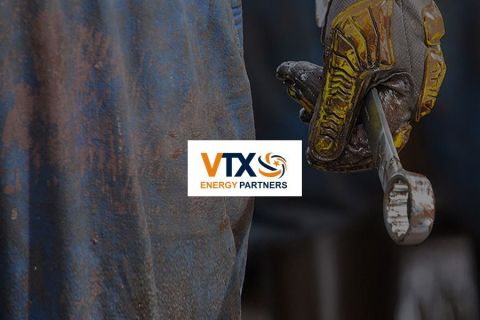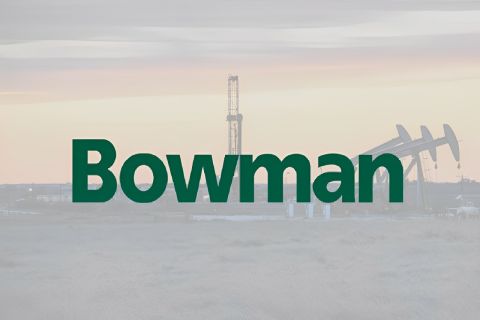
SAN ANTONIO -- After 20 years of being a gas-driven market, the U.S. industry is now being driven by oil activity, particularly the growing intensity of horizontal drilling. Prior to the economic downturn in 2008, vertical drilling activity was high. Then the shale plays began picking up steam and the switch to horizontal drilling led to a stark change in the land drilling rig market.
Matt Conlan, senior analyst, Wells Fargo Securities, told participants at the 2013 International Association of Drilling Contractors annual meeting Nov. 8 in San Antonio that with the advent of the horizontal drilling market in 2008, vertical drilling “has never recovered and we don’t think it ever will recover, at least not in the time horizon we’re looking at.”
How big a change has resulted from the switch to horizontal drilling in the U.S.? The number of rigs drilling vertically has dropped by about 90% since the downturn. With horizontal drilling has come pad drilling, resulting in much more efficient use of drilling rigs and an oversupply of rigs.
“We’re doing more with less. We’re moving from leasehold drilling to manufacturing-type, pad drilling. We are really cutting down our drilling times and drilling more wells with fewer rigs,” he emphasized.
“Historically, what we found is that when rig utilization is above 80%, day rates go up. Right now, we are comfortably below 80% at 68%. The question is, ‘When, or if, will land rig utilization return to 80%?’ We do think the rig count will be going up and gas will give us a little help. But overall we don’t see utilization getting back to 80% by the end of 2015,” he continued.
“We think it is going to be a long haul here, proportionately long for the older rigs. The one thing that could accelerate this is attrition if it takes off a little bit faster than it has over the last couple of years,” he added.
Fleet Recapitalization
Jim Wicklund, managing director, energy research, Credit Suisse LLC, agreed the land rig market faces some challenges. “The land rig industry is going to have to spend about one-third of its market capitalization over the next five years just to recapitalize the fleet. That is very difficult. They are spending every nickel they make to recapitalize their fleets.”
Some companies, like Helmerich & Payne (H&P), have instituted dividends. H&P instituted a dividend just to show that it could, he explained. At the other end of the spectrum, Nabors has been having to outspend its cash flow to rebuild a fleet that has a larger percentage of older rigs.
“As an industry, you guys need to figure out a better pricing model,” Wicklund emphasized. “You are creating a tremendous amount of value for your customers, but you aren’t doing a very good job of capturing it. For example, the transition from diesel to natural gas to reduce fuel costs is a benefit to the operator, not the contractor. The things the land industry is having to do and the capital it is having to spend to stay employed are challenges.”
Overcapacity of Land Rigs
Currently, there are about 1,700 land rigs operating in the U.S., which represents the top 15% of activity in the US onshore market in the last 25 years, Conlan said. The problem facing the industry is too many idle rigs, and there are several ingredients that go into that overcapacity.
“The first is industry spending, which is doing great. Indications are that spending will increase somewhere around 8% to 10% next year. It is a pretty healthy increase. The second is newbuilds. We have had a lot of newbuilds over the last eight years. The third, of course, is rig efficiency. The last ingredient is going to have to be attrition,” he continued.
Given that spending and drilling efficiency are going up and newbuilds are continuing to come forward, attrition is going to have to balance the market, he added.
The three largest and most mature shales are the Bakken, Eagle Ford, and Marcellus. According to Baker Hughes, average drilling times in the Bakken and Marcellus have dropped by 40% over the last 18 months. The Eagle Ford is down 20%, Conlan noted.
“In these three shales in the 3Q 2013, we’ve drilled about 2,400 wells with 500 rigs. If we had the same drilling time as we had in the 1Q 2012, we would have needed another 240 rigs to do that. Theoretically you have drilled yourself out of 240 rigs of demand. Of course, that’s a fallacy because there is not money to hire 240 more rigs.
“What we’re really doing is lowering the cost of production, which should increase returns and lead to increased spending and activity. That is why the service companies are reporting record revenues even though the companies have an oversupply of frac equipment,” he explained.
Gas drilling is seeing the same kinds of efficiencies. In the Haynesville, Fayetteville, and Barnett, the industry has had drilling improvements of 25%, he added. “Drilling is very low in these basins, there is a dream of having the gas market turn around, and that is going to save the rig market. We need to recalibrate how many rigs we’re going to need. I think that doesn’t bode well for the older rigs out there. We predict that 2012 was the last hurrah for older rigs.”
Where the older rigs had utilization of about 60% in 2012, Conlan predicted it would go down to about 40% in 2014. National Oilwell Varco’s annual rig census for 2013 showed 3,055 rigs available in the US. At 1,700 active rigs, the industry is a long way from 80% utilization.
Contact the author, Scott Weeden, at sweeden@hartenergy.com.
Recommended Reading
VTX Energy Quickly Ramps to 42,000 bbl/d in Southern Delaware Basin
2024-09-24 - VTX Energy’s founder was previously among the leadership that built and sold an adjacent southern Delaware operator, Brigham Resources, for $2.6 billion.
US Drillers Cut Oil, Gas Rigs for Third Week in a Row
2024-10-04 - The oil and gas rig count fell by two to 585 in the week to Oct. 4.
EY: How AI Can Transform Subsurface Operations
2024-10-10 - The inherent complexity of subsurface data and the need to make swift decisions demands a tailored approach.
Bowman Consulting to Manage, Monitor Delaware Basin Wells
2024-10-14 - Bowman Consulting Group’s scope of work includes conducting detailed field surveys of above-ground infrastructure assets across well sites of up to to 8 acres.
E&P Highlights: Oct. 7, 2024
2024-10-07 - Here’s a roundup of the latest E&P headlines, including a major announcement from BP and large contracts in the Middle East.
Comments
Add new comment
This conversation is moderated according to Hart Energy community rules. Please read the rules before joining the discussion. If you’re experiencing any technical problems, please contact our customer care team.




